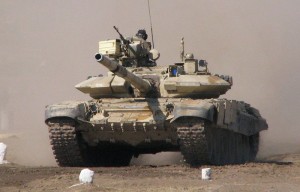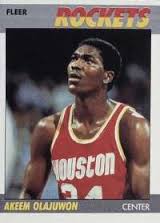 When I regularly covered the NBA on a daily basis too many years ago, a number of us promised ourselves that when new days arrived, we would never bore people by talking about the good old days.
When I regularly covered the NBA on a daily basis too many years ago, a number of us promised ourselves that when new days arrived, we would never bore people by talking about the good old days.
The notion that the past is always better than the present is a sermon delivered by the aged and, as Pete Townshend once wrote, “Hope I die before I get old.”
But having observed the Philadelphia 76ers the last two years, I can’t help myself:
Tanking is simply not as much fun as it used to be.
 The Sixers managed to end their winless season after 17 games when they defeated the Timberwolves on Wednesday, and they went one better last night by beating Stan Van Gundy’s hapless Detroit Pistons in overtime.
The Sixers managed to end their winless season after 17 games when they defeated the Timberwolves on Wednesday, and they went one better last night by beating Stan Van Gundy’s hapless Detroit Pistons in overtime.
The 0-17 start left them one short of the league record to open the season, but they already own a share of another record – longest losing streak. They “accomplished” that last season when they adeptly lost 26 consecutive games.
In Philadelphia, losing has been ugly and the criticism of dumping players in hopes of later adding players to build a contender has been harshly criticized.
It was not pretty in Houston, but at least it was entertaining in part because the Rockets had such an interesting cast of characters.
In 1981, the Rockets did something only two other teams had done before them, and something no team has done since – they made the NBA Finals with a losing record. Led by Moses Malone, the Rockets finished the regular season 40-42 and were the sixth-seeded team in the West.
Only six teams qualified in each conference at the time and the first series was a best-of-three, which could lead to crazy results.
 The Rockets were matched against the defending champion Los Angeles Lakers and their exciting 21-year-old second year guard Magic Johnson in the first round, and shocked the Lakers with a victory in the first game in L.A.
The Rockets were matched against the defending champion Los Angeles Lakers and their exciting 21-year-old second year guard Magic Johnson in the first round, and shocked the Lakers with a victory in the first game in L.A.
When the Lakers won the second game in Houston, it seemed the basketball stars had aligned and the Lakers would take care of business at home.
They did not. The Rockets won the game, defeated San Antonio in seven games in the second round, had a matchup with the Kansas City Kings – who were also 40-42 that season – in the conference finals and won that in five games.
The Rockets managed to win a game in Boston in the Finals. But ultimately were not as good as the Celtics, who were led by second-year star Larry Bird in the Finals. Houston lost in six games.
The next season, the Rockets won 46 games but lost in the first round and Malone became a free agent. Houston management determined the team had gone as far as it could, so when Malone got an offer sheet for six years and $13.2 million from, interestingly enough, the Sixers, the Rockets decided to let him go and rebuild.
Under the rules at the time, the two teams agreed to make a trade and Houston got Caldwell Jones and a first-round pick. The Rockets stumbled to a 14-68 record, but they had a unique cast of characters, including Hall of Famer Elvin Hayes, who averaged 12.9 points a game at 36. Hayes was constantly in a bad mood, so trying to interview him was always an adventure.
Not so with the late Caldwell Jones, who after every game had the equipment manager bring a bucket of iced-down beers, which he kept next to his locker. Jones would patiently answer every question while steadily disposing of his beers.
At 5-9, 165, Calvin Murphy was in the penultimate season of a 13-year career and was as feisty as ever. I was once at a game where Murphy got into a fight with Sidney Wicks, who was a foot taller and 60 pounds heavier, and Murphy knocked him down and bloodied his eye.
Asked later how he managed that, Murphy said pugnaciously: “I’m a man. I don’t care how big he is. I’m a man, too.”
Jammin’ James Bailey wasn’t the most disciplined basketball player, but he played all-out and entertained with a variety of nasty dunks.
Allen Leavell was the leading scorer and an underrated guard who was one of the quickest and fastest guards in the league. He was, at times, fun to watch.
And then there was Joe “Jelly Bean” Bryant, who had a four-year-old son at the time named Kobe. The senior Bryant was personable, cooperative and an easy interview.
At the time, there was a coin flip to determine the No. 1 pick and the Rockets won the flip and the right to draft 7-foot-4 Ralph Sampson, who former GM Ray Patterson called “the player of the century.” Sampson seemed capable of having the same impact on the league as Kareem Abdul-Jabbar or Bill Walton before him, but Sampson was not as talented as either and bad knees led to his career ending at age 31.
The Rockets went from 14 to 29 victories the next season, but 1983-84 was a year of great parity. Only one team in the West won more than 50 games, five more won 40 or more and every team except Houston won at least 30. So the Rockets were, again, in the coin flip.
 Again, they won and took Hakeem Olajuwon (who then spelled his name “Akeem”). At the time, Mavericks GM Norm Sonju was incensed. The Mavericks had won 15 and 28 games in their first two seasons and got Mark Aguirre and Bill Garnett in the draft.
Again, they won and took Hakeem Olajuwon (who then spelled his name “Akeem”). At the time, Mavericks GM Norm Sonju was incensed. The Mavericks had won 15 and 28 games in their first two seasons and got Mark Aguirre and Bill Garnett in the draft.
The Rockets won 14 and 29 and got Sampson and Olajuwon.
Sonju led a charge to change the coin flip to a lottery and succeeded, which delighted Patterson, who was a very smart basketball executive, but also an outspoken, funny, outrageous individual.
“I love it,” Patterson said. “Now they changed it so seven teams get into the lottery. If we don’t make the playoffs, we can get in the lottery and win (Patrick) Ewing. So (bleep) them.”
Tanking was much more fun then.
Although it worked out for the Rockets, who eventually won two titles because of Olajuwon, there have been many teams that have tried and failed to rebuild by losing.
Sixers executives have pointed before to Oklahoma City, which drafted Kevin Durant, Russell Westbrook and James Harden in consecutive years, as a team that rebuilt through the draft.
But the fact is the Thunder got lucky with Durant. In 2007, scouts had Durant and center Greg Oden rated even. Had Portland drafted Durant with the first pick, the Thunder, who were in Seattle at the time, would have been left with the injury-riddled Oden, who has played 105 games in his career.
After a recent loss, Sixers coach Brett Brown astounded the masses by saying, “We’re not that far away.”
From what?
A disaster?
Perhaps the ultimate criticism came from Fred Carter, who was the leading scorer on the 1972-73 Sixers team that set the all-time record for losses with a 9-73 record.
“There was no intentional dumping,” Carter recently told the Washington Post. “There was no plan to lose games to get better because people didn’t think that way. Dump a whole season like what’s being done now? It’s really sickening to the stomach to hear and see that.”
Although the idea of tanking did not begin until later, it has been practiced many times over the last three decades. And as the Sixers are continuing to prove, it is ugly and unpleasant to watch.
Jan Hubbard has written about basketball since 1976 and worked in the NBA league office for eight years between media stints. Follow him on Twitter at @whyhub.
LAKERS ARE ALL KOBE, ALL THE TIME
DIRK NOWITZKI-LARRY BIRD: STILL NOT A VALID COMPARISON
MICHELE ROBERTS’ POSTURING REMINISCENT OF STERN
KYRIE WILL FIND OUT THAT LeBRON IS GOOD AT SHARING
SHOULD HARDEN TRADE STILL BE CURSED FOR THUNDER?
LAKERS ARE WORTHY OF, AHEM, PRIME TIME
A 44-MINUTE GAME? WHAT WOULD WILT SAY?
SMART MONEY IS ON THE SPURS
Have you watched the Sixers lately? They are more entertaining than many teams in the NBA simply by how hard they work and play night after night. The Pistons are an abysmal team to watch which is also true of the Knicks. The Sixers young players get after it and are steadily improving. What enjoyment does a Knick fan get from watching Dalembert and Calderon play who won’t be there in a year or two and despite their experience in the league have helped the Knicks win a grand total of one more game than the Sixers young, exciting players like Nerlens Noel, KJ McDaniels and MCW. As a Sixers fan, I would much rather watch these young players get playing time crucial to their development and improvement rather than vets who are not going to take the team anymore give nominal effort and can often be cancers in the locker room.